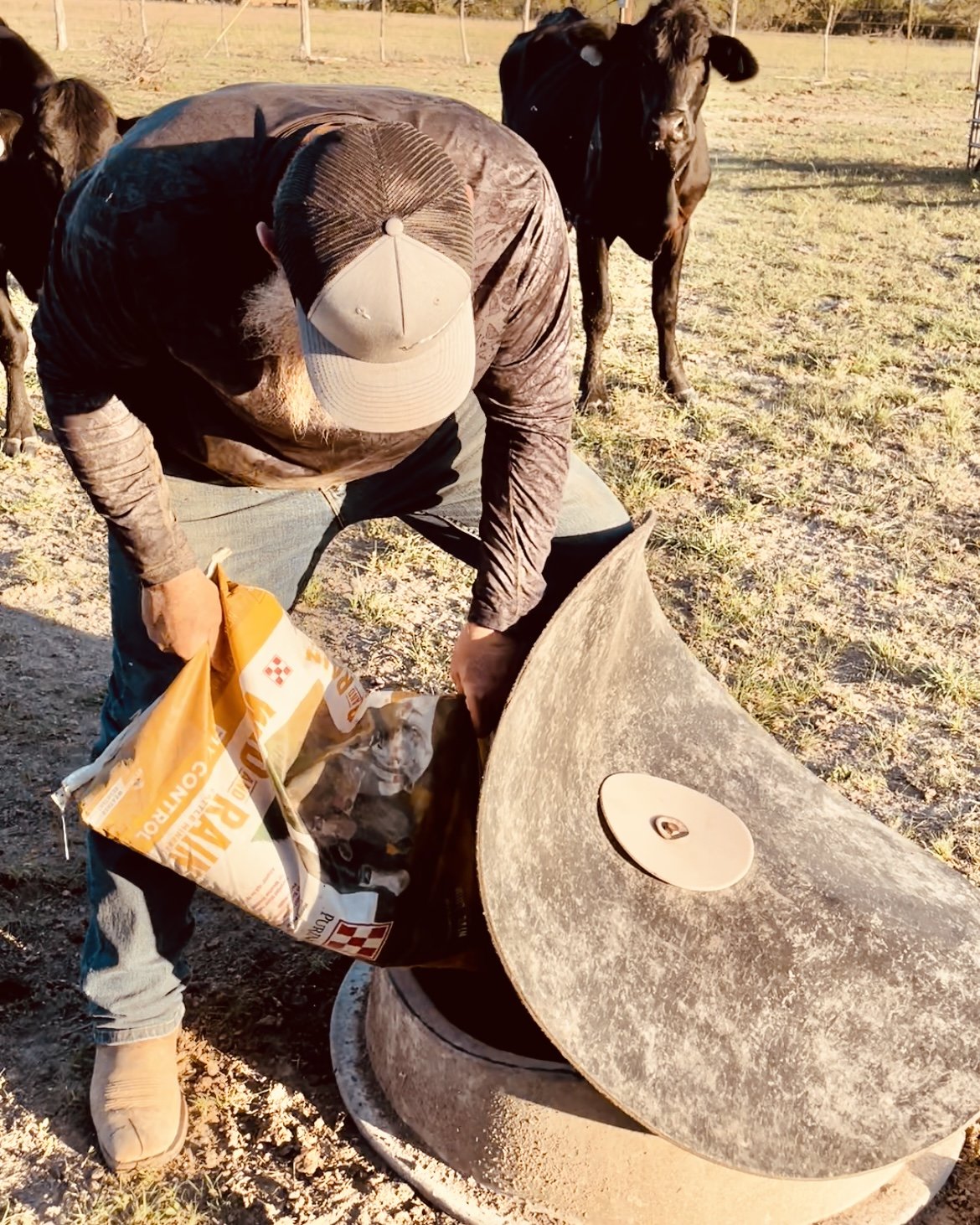3 Cattle Disorders Prevented by Adequate Mineral Intake!
Keeping our cattle healthy is our top priority. We want to keep our mommas adequately fed and at a healthy weight. This starts with adequate energy and protein intake. The next element to consider is their mineral & vitamin intake. Sufficient mineral and vitamin intake not only prevent illnesses but also optimize calving! Both factors affect not only our bottom line but the quality of life for our animals!
Minerals and vitamins affect many body systems and processes in beef cattle. They are important for fertility, growth, general health and development of the beef cow. Let’s discuss just three illnesses that are preventable by simple mineral supplemental. They are grass tetany (magnesium deficiency), milk fever (calcium deficiency), and white muscle disease (selenium deficiency).
1. Grass Tetany occurs when cattle graze young green pastures which causes low circulating magnesium in the blood stream. This occurs in early spring usually or on green winter grasses. Older cows with a calf at their side lactating are more susceptible to this. Also, angus cattle are more susceptible than some other breeds. Cattle are usual found dead with thread marks on the ground from thrashing around from the muscle tetany. If found alive, they will have a stiff or staggering gait, muscle twitching, incoordination, aggression, crazy broad eyes. The keys to prevention include adding magnesium supplementation either in mineral form or in the water source, waiting to turn on pastures until grass is 6 inches tall, provide supplemental hay while grazing green pastures.
2. Milk fever occurs after calving when the need for colostrum demands more calcium requirements from the mother. This affects not only dairy cattle but also beef cattle. Older cows are more susceptible to this because they have decreased calcium stores. Symptoms include tremors, twitching, weakness and often you will find the cow laying down. Their extremities are cool, they have an elevated heart rate. Despite the name they do not have a fever in fact they may have a low temperature. This is prevented by providing adequate calcium supplementation. There are some suggestions to restrict calcium just prior to calving which will initiate the parathyroid gland to release calcium from the bones.
3. White muscle disease affects young calves that have usually a selenium deficiency or deficiency in vitamin E. It is called white muscle disease because it actually turns the muscle white on necropsy (animal autopsy). The symptoms include stiffness, muscle paralysis specifically in the hind end. The tongue is also paralyzed at times and will prevent suckling. Prevention includes selenium supplemental (which is closely regulated due to toxicity) where soil and forage have low levels of selenium and vitamin E.
This is just a few disorders that are caused by mineral deficiencies. There are many more problems that can occur by too little or too much mineral. It is important to supplement mineral appropriate to your area. Mineral needs will depend on your forage and water concentration of minerals (macro & trace) and vitamins. In Texas there are essentially three different packaged formulas for Macro Mineral supplementation. They are as follows:
1. High calcium: low phosphorus (14-18% : 5-8%) I would feed this if my supplemental protein source already had added phosphorus. Excess phosphorous is just excreted and is wasted money.
2. Balanced calcium and phosphorus (12%:12%)
3. Calcium and phosphorus with added magnesium for cattle that are grazing green pastures
Purina provides some great information on general supplementation rates. Check out the link for their information. Purina Mineral Guide
More on Macro Minerals in future blog posts!
The ladies love it!





